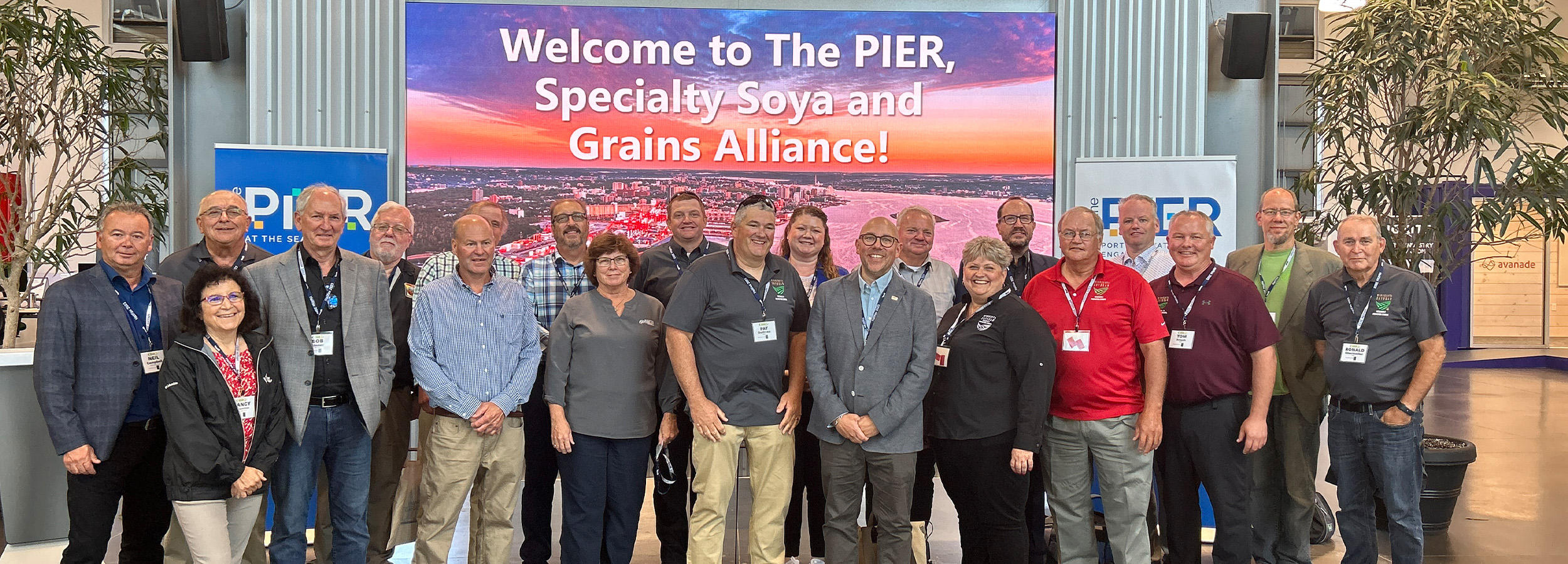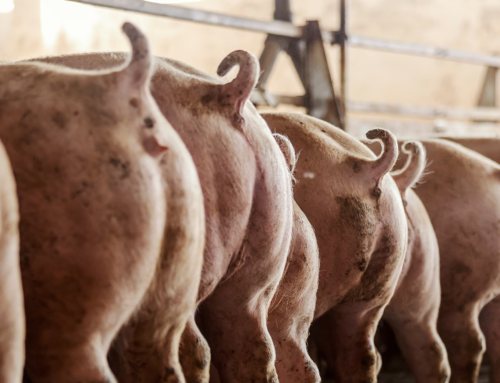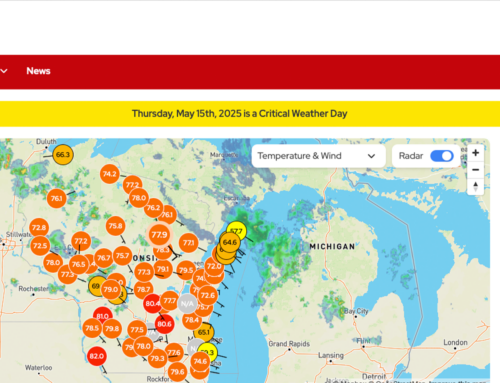
WSMB finds potential in Port of Halifax
Share This
Wisconsin soybean growers are creating opportunities beyond the St. Lawrence Seaway.
In August, Wisconsin United Soybean Board Directors Sara Stelter and Nancy Kavazanjian visited Halifax, Nova Scotia, Canada as part of Specialty Soya and Grains Alliance’s (SSGA) “See for Yourself” Port of Halifax tour. Connected to more than 150 countries, the Port of Halifax has the potential to export Wisconsin-grown soybeans to European countries through the Great Lakes St. Lawrence Seaway, expanding the market and increasing farmers’ bottom lines.
“I think it is really important that as farmers, we are part of the conversation because we can add so much more in terms of grain and soybean shipping,” said Stelter, who also presides over the Wisconsin Soybean Association (WSA). “The enthusiasm and the potential are there. And that’s going to open up new markets for Wisconsin soybeans.”
Generating conversations was the focus while in Halifax. Those conversations were kickstarted at the PIER, a center for port innovation, planning and strategy, where attendees heard from key players in the shipping and transportation industry. As a member-supported and member-driven company, the PIER is a living lab for maritime transportation and logistics, dedicated to solving persistent sector challenges.
“We want to drive innovation for our supply chain and create efficiencies,” said PIER Director David Thomas. “These problems are larger than just one partner. We have to be able to work with our rail line, with our terminal operators, with our carriers.”
Along with Thomas, numerous industry leaders spoke with the group.
“SSGA is focused on the logistics and the business behind this trade,” SSGA Executive Director Eric Wenberg said. “As a learning and listening organization, we’re going to have conversations and figure out what to do next. Shipping and transportation is the backbone of what we do.”
In marketing year 2021/2022, the United States exported approximately 2,158 billion bushels of soybeans, yet only about two percent left the country via the St. Lawrence Seaway. Why? Joe Smentek, executive director of the Minnesota Soybean Growers Association, posed another question.
“Why not Duluth?” Smentek said. “We’ve had really great conversations with feed mills in Morocco. They want soy from Minnesota and Wisconsin because they know the quality of the product that we have. There is a lot of opportunity for bulk shipments, especially port to port.”
If it was easy, everyone would be doing it, right?
“There are still barriers,” Smentek said. “The biggest one right now is economics. It is cheaper out of Houston and Norfolk. Highway H20 is working on a study to say, ‘Here is the cost that goes into the St. Lawrence Seaway and here’s the cost that goes into Houston.’”
Furthermore, exporting out of Houston is cheaper because the state of Texas pays a lot of the costs associated with shipping and transportation.
“The question is, what fees can we tap into?” Smentek said. “If there is a pilot fee on a dock, can the state of Minnesota or Wisconsin pay for the pilot to come into Duluth or Superior? Can we start doing those things? But those questions haven’t even been asked yet. So that’s really what this effort is about.”
Luckily, Wisconsin soybean farmers don’t shy away from asking questions that no one else is asking.
“It’s nice to have farmers – the experts – in the room to ask those questions,” Smentek said.
As Friday’s lunch sponsor during the Halifax See for Yourself mission, WSMB continues to wisely invest checkoff dollars in ventures that illustrate and emphasize the importance of increasing demand for Wisconsin soybeans.
“In the meantime, it’s a good exercise for the checkoff to make sure that there is a plan,” said Adam Kask, WSMB manager of strategic programs. “And if you do have people that want U.S. soy like they do in Morocco, that they have a cheap, easy way to get it there and to get it there from Wisconsin.”
While there is still work to be done before the Port of Halifax becomes a hub for Upper Midwest-grown soybeans, Wisconsin soybean checkoff investments are doing what it can to make the stars align.
“This program was a way to see the potential that we have in the Great Lakes states in terms of port development and shipping through the St. Lawrence Seaway,” Stelter said. “It was a real eye-opening experience in terms of what’s possible in my mind.”



